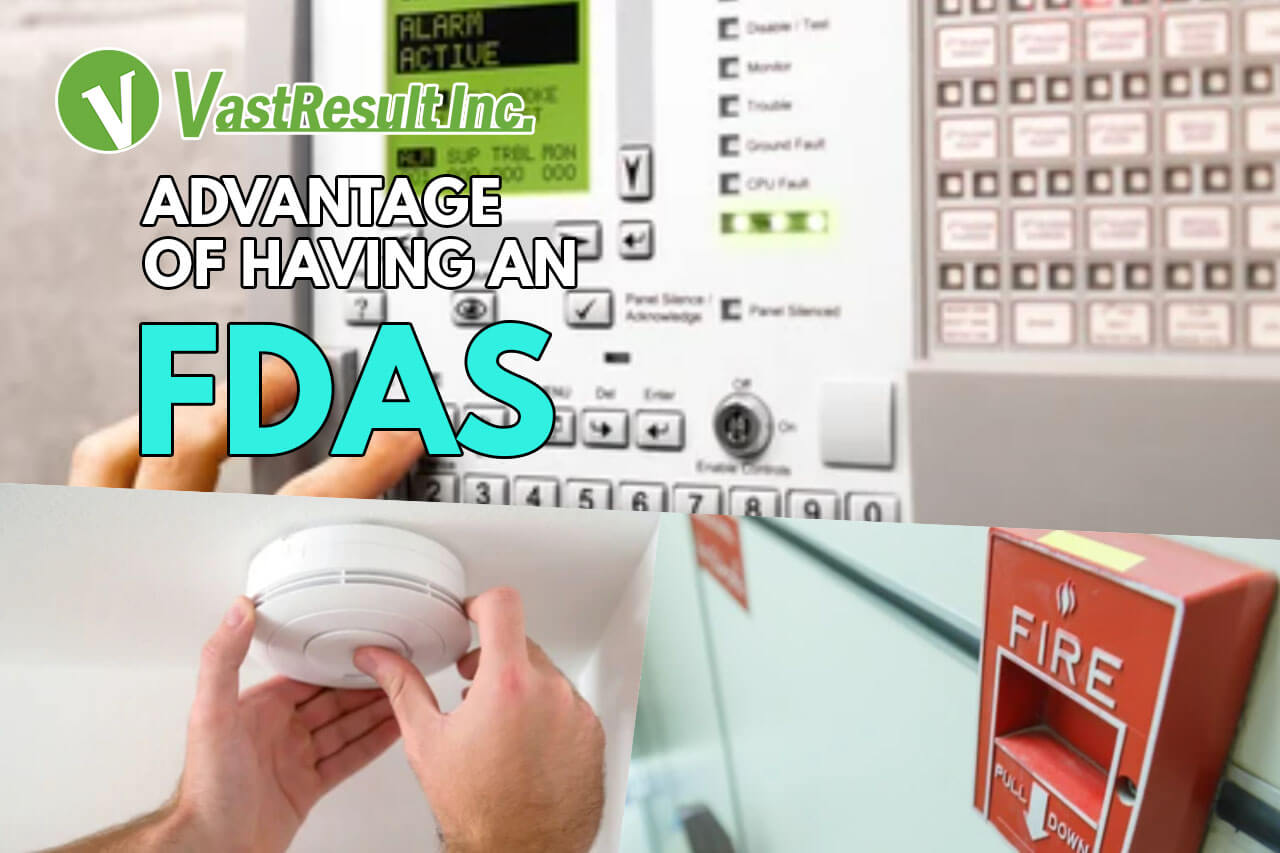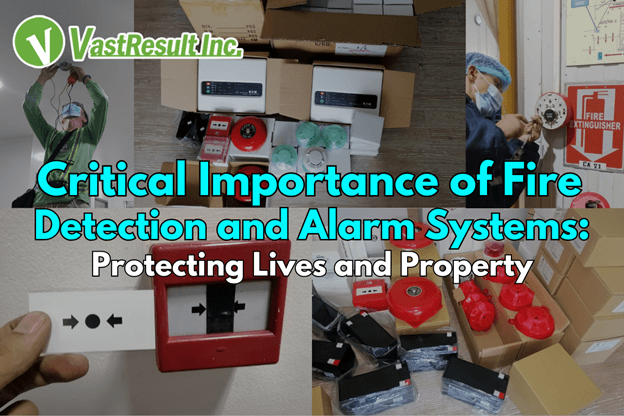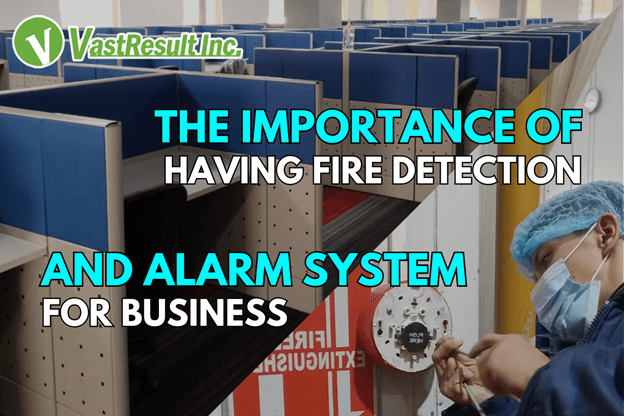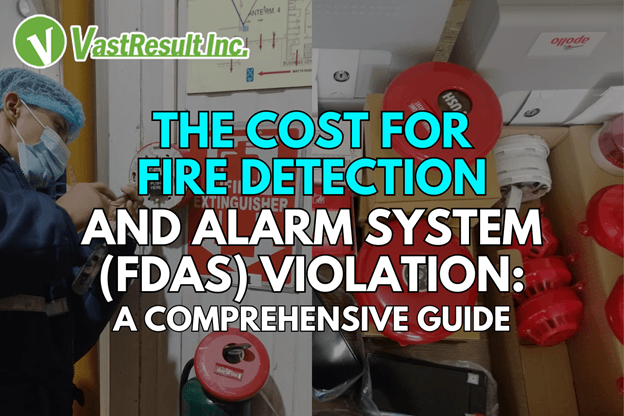
Advantage of having FDAS
February 23, 2023
Why Your Business Needs PABX More Than You Think
March 31, 2023Every structure, even a small neighborhood, needs a fire and detection alarm system (FDAS). This is to keep an eye on any potential fires and send out alerts and triggers to everyone to stop more damage and casualties. Thus, in other instances, a fire was not discovered until it had spread, which led to the loss of important records, equipment, and even life. A trustworthy monitoring system is required to prevent this sort of occurrence.
What Function Does a Fire Alarm System Serve?
A fire alarm system’s primary function is to locate fires and notify building inhabitants and emergency services from a centralized monitoring and controlled location. These systems also self-monitor, indicating the location(s) within the building(s) from which alerts originate as well as any wiring or connection issues that can prevent the system from functioning properly. A fire alarm system essentially performs the following four tasks: detect, alert, monitor, and control. These complex systems perform these four tasks through a network of gadgets, appliances, and control panels.
What Components Comprise a Fire Alarm System?
As was already said, a fire alarm system is made up of several discrete components, each of which serves a specific purpose. To comprehend how the system functions as a whole, it is vital to grasp what these components are and how they interact.
The five essential components of every fire alarm system are as follows:
- Initiating DevicesThe component of the alarm system that detects smoke or a fire is known as an initiating device. These appliances include different types of smoke detectors, heat detectors, sprinkler water flow sensors, and pull stations.
- Indicating Appliances The component of the system that sounds the alarm and warns inhabitants of the fire threat is the indicating appliances.
Horns, chimes, bells, and in rare circumstances, strobe lights for the deaf and hard of hearing, are examples of indicating equipment. Most of these appliances are intentionally noisy in order to be heard and to motivate people to swiftly leave the premises.
Strobe lights are also used in conjunction with the other indications so that there is a visual warning of the fire when deaf or hard-of-hearing people are present or where the code mandates it.
- Fire Alarm Panel The user interface, main controlling and monitoring component, and system heart of the system is the fire alarm control panel (FACP). It contains a display that shows the fire alarm system’s current status (alarm or no alarm) and a touchpad that lets onsite staff program, troubleshoot, quiet, and reset the system. All of the initiating, signaling, and associated telephone links, field wiring, circuit cards, and internal wiring of the system are monitored and under the supervision of the fire alarm panel. Additionally, in the event that an alarm is activated, a call is made to a monitoring agency via the fire alarm panel, alerting emergency services.
- Power Supplies Power supplies provide 24-hour backup from two 12V batteries, primary power from the breaker, and occasionally a generator for many fire alarm systems. Either the control panel or a different enclosure may house the batteries. If the electricity goes out, the batteries will take over, enabling the system to keep the building fire-safe for another 24 hours. Power outages might last longer when a generator is used.
- Auxiliary devises A fire alarm system may be expanded with several more components to improve fire safety system in a building. Other devices may include remote annunciators, alarm quiet switches, electromagnetic door holds, fire doors, visual LED indicators that display which zone in a building a fire alarm was activated, visual LED indicators, elevator capture, shutdown, etc.
How Do Fire Alarm Systems Detect a Fire?
The aforementioned starting components of a fire alarm system are how it detects a fire. Through 2- or 4- wire circuits, the fire alarm panel is connected to the system’s starting components. With the use of this circuitry, the control panel is able to track the status of its starting devices, often by zone, and determine whether they are in normal mode or alarm mode. These readings are shown on the control panel’s display panel. One of the starting devices will be activated by smoke or heat when a fire starts, or the manual pull station will be activated by someone, notifying the fire alarm system and placing it in alarm mode.
When the fire alarm system is activated, what happens?
When the system enters alert mode, two things ought to occur:
- The alarm should be set off by the indicated equipment to alert everyone inside the structure to the threat.
- The monitoring provider should be contacted via the phone lines of the system.
Some fire alarm systems also have fire suppression systems that can be activated to aid in putting out the fire until help comes.
How To Disarm A Fire Alarm?
The fire alarm panel must be read and used by the building management or maintenance staff, especially if it is malfunctioning or is emitting false alerts.
There are choices to quiet the alarm and problem, as well as to reset the system, on the control panel’s touchpad. These should only be utilized after the alert or notification’s origin has been located and properly addressed.
Why Choose us as your Fire Alarm System Contractor?
VastResult Inc. is a Fire Alarm Contractor dedicated to assisting its clients in having a safe fire detection and alarm system that strictly adheres to the BFP regulations, ensuring the life protection of everyone who lives, works, and visits their building premises against unexpected fire accidents.
We take a forward-thinking approach to new technologies and methodologies, providing our clients with the greatest goods and systems that can be expanded and upgraded as needed.
We strive to create better answers to problems that may develop in the future because we cherish life, our clients, and, most importantly, their hard-earned budget to secure the success of their businesses and the lives of others.
Contact Us!
Tags:
- fire alarm
- security systems
- smoke detectors
- alarm systems
- fire detector
- fdas system
- kidde smoke alarm
- fire alarm installation
- alarm home
- addressable fire alarm system
- conventional fire alarm system
- addressable smoke detector
- home fire alarm
- types of fire detectors
- fire detection and alarm system
- fire control panel
- fire suppression systems
- fire alarm system
- alarm security
- fire detector
- heat detectors
- smoke detector wires
- smoke alarm system
- fire system installation
- fire alarm sensor
- smoke detection system
- home fire alarm system
- conventional smoke detector
- install smoke detector
- fire detector sensor
- fire alarm devices
- fire panel system
- fire alarm wiring
- fire alarm smoke detector
- addressable fire alarm
- conventional fire alarm
- type of smoke detector
- fire alarm services near me
- fire alarm equipment
- conventional fire alarm panel
- addressable fire alarm control panel
- system sensor smoke detector wiring diagram
- fire alarm requirements
- alarm monitoring
- smoke alarm wiring diagram
- fire alarm installation wiriing diagram
- fire alarm detection system
- addressable smoke detector wiring diagram
- conventional fire alarm control panel
- fire alarm connection
- fire alarm system maintenance
- kidde fire alarms
- fire alarm wiring diagram
- fire alarm service
- smoke detector wiring diagram
- fire alarm panel
- edwards fire alarm
- fire panel
- fire sensor
- fire alarm control panel
- system sensor smoke detector
- fire alarm system installation
- fire alarm detector
- smoke detection
- fire detection
- fire alarm bell
- fire bell
- alarm bell
- fire alarm fire alarm
- sensor system smoke detectors
- commercial fire alarm system
- a fire alarm
- smoke detection alarm
- home fire alarm system
- alarm control
- smoke alarm installer
- fire supplier
- fire system
- fire panel
- fire detection system
- fire safety products
- smoke alarm installation
- fire alarm maintenance
- fire alarm test
- facp panel
- fas system
- fire safety system
- commercial smoke detector
- fire alarm system companies
- fdas installation
- fire alarm supplier
- smoke detector maintenance
- fdas supplier philippines
- fire alarm standard





